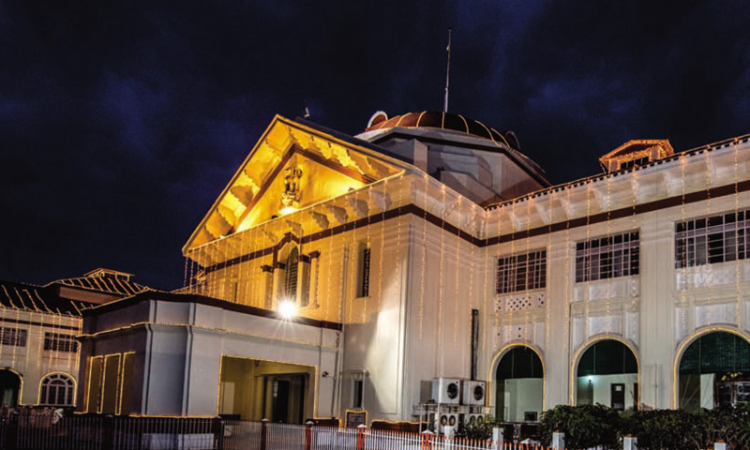- Home
- /
- News Updates
- /
- "Admittedly There Was No Test...
"Admittedly There Was No Test Identification Parade": Patna High Court Acquits All 13 Accused In 1999 Senari Massacre Case
Nupur Thapliyal
22 May 2021 8:41 AM
The Patna High Court on Friday acquitted all 13 accused persons in connection with 1999 Senari Massacre case killing 34 persons after observing that the circumstances in which the Test Identification Parade was conducted makes it "weak and without any corroboration".A division bench comprising of Justice Ashwani Kumar Singh and Justice Arvind Srivastava set aside the trial court judgment...
The Patna High Court on Friday acquitted all 13 accused persons in connection with 1999 Senari Massacre case killing 34 persons after observing that the circumstances in which the Test Identification Parade was conducted makes it "weak and without any corroboration".
A division bench comprising of Justice Ashwani Kumar Singh and Justice Arvind Srivastava set aside the trial court judgment dated November 15, 2016 and the sentencing order against accused persons thereby directing all 13 of them to be released forthwith.
Observing that the identification of the accused persons bythe witnesses cannot be relied upon to convict them, the Court ordered thus:
"The miscreants have been identified in the dock for the first time more than seven years and extendedup to about 16 years after the occurrence. The circumstances inwhich the identifications were made, as discussed above, makesuch identification rather weak without any corroboration. Thedock identification was based on recollection of the events,which took place long back."
On March 18, 1999 at around 7:30 PM, hundreds of armed miscreants entered the village Senari and searched persons allegedly belonging to "Ranveer Sena", took them to the village outskirts and murdered 34 of them. At the time of incident, there was no electricity in the village. It was thus, submitted by witnesses that they had identified the miscreants in the flash of torch light.
An FIR was registered on March 19, 1999 on the oral statement of one Chintamani Devi, wife of one of the persons who was killed in the massacre. On the basis of this, police registered FIR under sec. 147, 148, 149, 324, 307, 302, 452, 380, 120-B of the Indian Penal Code, 27 of the Arms Act, 17 of the Criminal Law Amendment Act and 3/4 of the Explosive Substances Act.
The trial court had vide judgment dated November 15, 2016 sentenced the accused persons. Amongst them, Bachesh Kumar Singh in, Budhan Yadav, Gopal Sao, Butai Yadav, Satendra Das, Lalan Pasi, Dwarik Paswan, Kariman Paswan, Gorai Paswan and Uma Paswan were sentenced to death and others were awarded life imprisonment. The appellants had challenged the judgment of the trial court and the death sentence reference made by the Trial Court which were disposed of together by the High Court vide a common judgment.
After examining the facts of the case, statements of witnesses on record and the post mortem reports, the High Court was of the view that no TIP was conducted during the course of investigation and that the conviction was based on dock identification made more than 7 years and extended to about 16 hours after the incident. In view of this, the Court also noted that the appellants were not known either to the informant or to the other villagers, who had gathered at the Thakurbadi in the immediate aftermath of the occurrence.
"Having analyzed the testimony of the witnesses examined before the court in respect of each of the convicts, there remains no doubt that the time of occurrence was dark, the site of unfortunate massacre was beset with mayhem with villagers making desperate attempts to seek refuge in a place and position in which they would remain unseen by the miscreants lest they fell prey to their barbarism. In such a state of complete chaos, witnesses hiding in different corners of the village have claimed to identify one or more accused persons without any indication as to the source of light save the torches being carried by the miscreants." The Court observed at the outset.
Furthermore, the Court was of the view that it was nobody's case that the miscreants were identified through voice or clothes or any other mark of familiarity.
"In such a situation, characterized by darkness and physical distance, the question naturally arises as to how could any kind of identification of faces of the miscreants be made. The seizure lists do not indicate the seizure of any artificial sources of light which could have aided the identification on a dark night. Furthermore, the miscreants have been identified in the dock for the first time more than seven years and extended up to about 16 years after the occurrence. The circumstances in which the identifications were made, as discussed above, make such identification rather weak without any corroboration. The dock identification was based on recollection of the events, which took place long back. Admittedly, there was no TIP." The Court held.
Title: State of Bihar v. Bachesh Kumar Singh & Ors.

